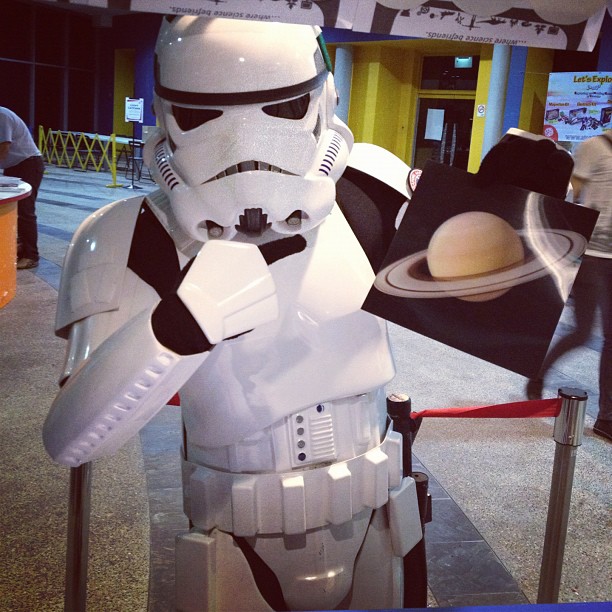Every year around this date the Earth reaches a position around the Sun that causes the south pole to lean/tilt towards the Sun at its greatest extent. This is known as Solstice, which means "Sun-stationary".
This could mean its an ideal time to buy lots of nice pens, pencils and rulers illustrated with smiley-face suns for Christmas or.... that the Sun, having gradually shifted more toward the South each day for the past few months, has now reached its Southern-most point in the sky. Therefore with each new sunrise after 21st December, the Sun appears to reverse course and shift back towards the Northern half of the sky.
The effects of the Solstice are the related to the seasons, as the intensity of sunlight varies at different places on the Earth.
Commonly known as Winter Solstice, it also results in the shortest daylight hours and longest night of year in northern hemisphere countries. At the same time, southern hemisphere countries experience their Summer Solstice or longest daylight hours/shortest nights.
Naturally there are lots of cultural events and festivals around this time. In Singapore, some of those of Chinese ancestry celebrate with family and friends by eating a dessert known as tangyuan 湯圓
The region that receives the most intense sunlight at this time of year is known as the Tropic of Capricorn. This is because the Sun's position in the sky during this time (i.e. its southernmost point), used to be directly in front of the constellation Capricornus.
However, the Earth's tend to wobble as it rotates and over thousands of years this wobble (known as precession) resulted in the Sun's southern solstice position shifting into the neighbouring constellation of Sagittarius. I guess someone should go re-label all those globes and maps and replace the Tropic of Capricorn with "Tropic of Sagittarius". At the same time they should also change the northernmost position of the Sun as well (i.e. Tropic of
Solstice in Singapore
As mentioned in my previous post during the June Solstice, the effects on equatorial regions, such as Singapore, are much more subtle.
Slightly north of the equator, Singapore also experiences its shortest daylight hours, roughly 12hrs 3mins 2secs from sunset to sunrise, but this does not coincide with the latest sunrise, which occurs during February in the tropics.
Solstice marks the time when Singapore sunrise becomes later than 7am (i.e.7:01am). From now until February, sunrise will gradually get later and later, so you can enjoy a few extra minutes of darkness in the morning.
 |
| Sun's position 9am June - Facing east, Sun rises from North-East (left) |
 | |
|
In December, sunrise is from South East and sunset South-West. Therefore, those with south-facing windows can expect more sunlight at this time of year, while north-facing window enjoy more shade. However, in December its raining most of the time, so it probably won't make much of a difference.
End of the
Finally, 21st December 2012 is now more well known for its association with the ending of an ancient Mayan calendar.
 |
| Mayan Pyramid of the Moon |
1 day is
called a k’in.
20 days is
referred to as 1 winal.
360 days is
called 1 tun.
A period of
20 tuns is called 1 k’atun
20 k’atuns
are grouped into 1 b’ak’tun, which is equal to 144,000 days.
This so called Mesoamerican Long Count Calendar ends after a cycle of 13 b'ak'tuns, which when translated to our modern Gregorian Calendar finishes on 21st December 2012.
Many scholars and scientists think that after this date the calendar simply repeats itself or starts again, similar to how we always start back at January every year.
However, there are many other ideas out there that have developed over time, referring to doomsday and the end of the world. Many are based on scientific findings and events like asteroid collisions, planetary alignments and solar storms but have been extremely exaggerated and highly unlikely.
I think its all just a great excuse to make tonnes of movies, documentaries, write books and articles.
I guess we will find out soon!




































+-+Taken+from+16inch+Cassegrain+telescope+with+Nikon+D70+-+Science+Centre+Observatory.JPG)










